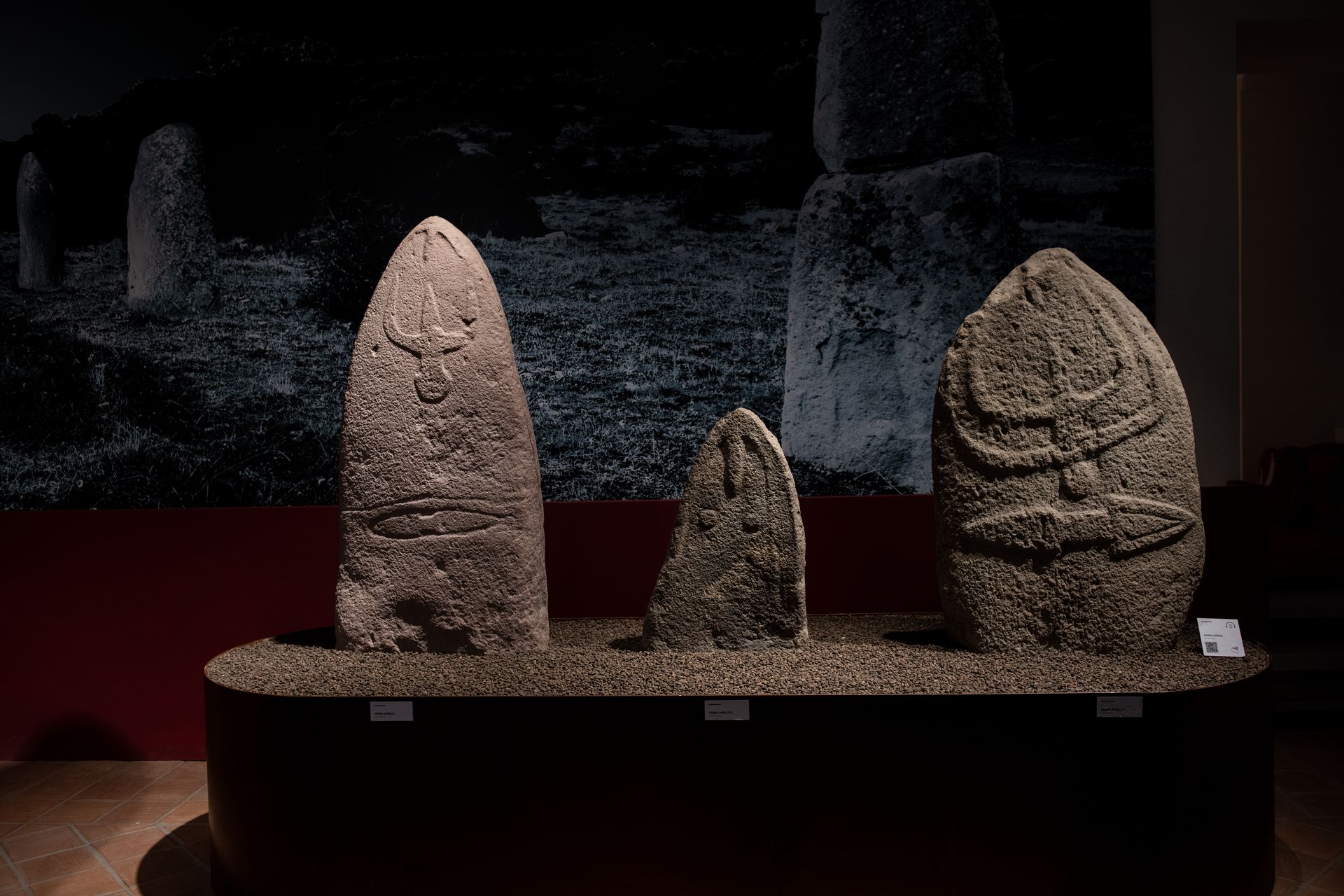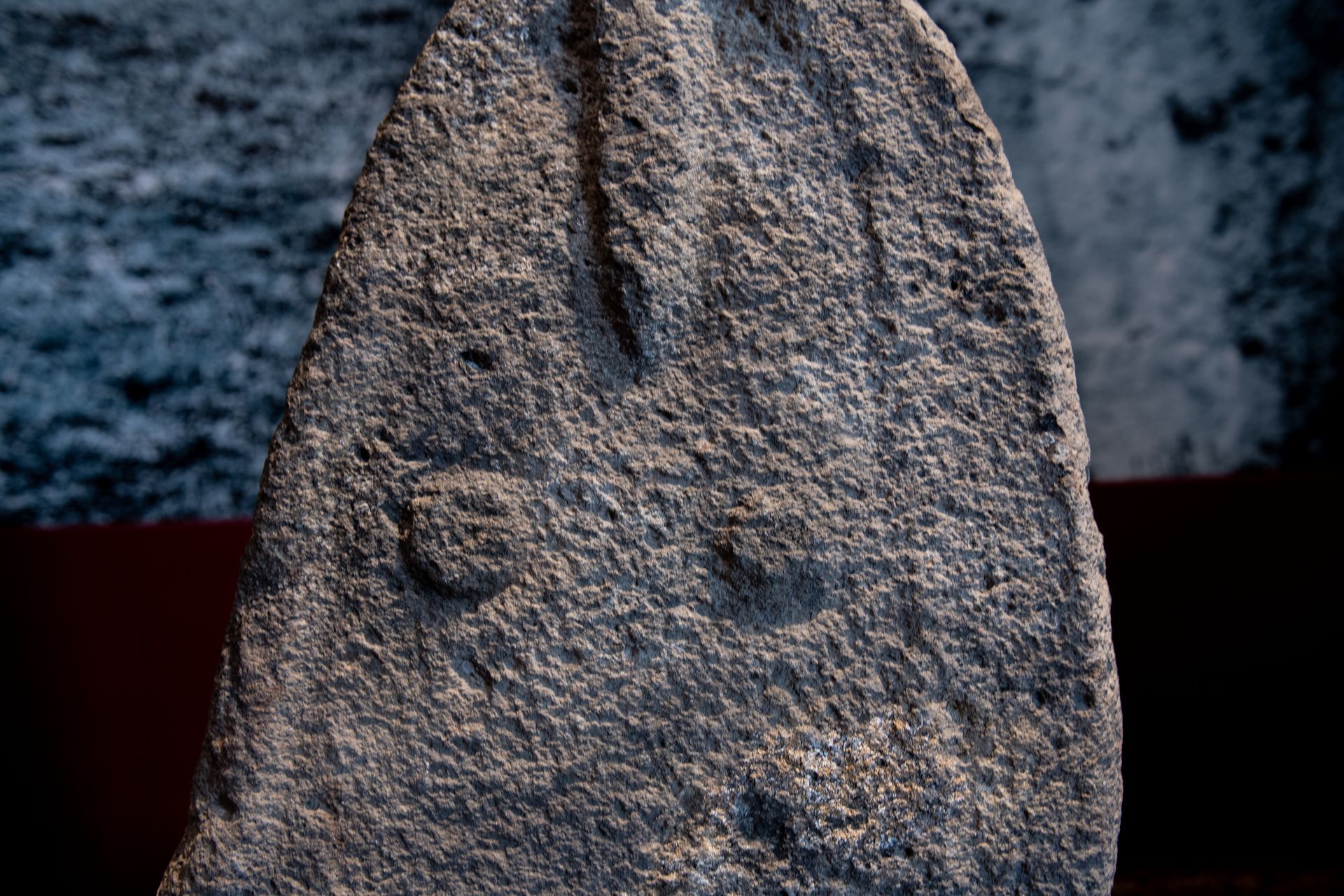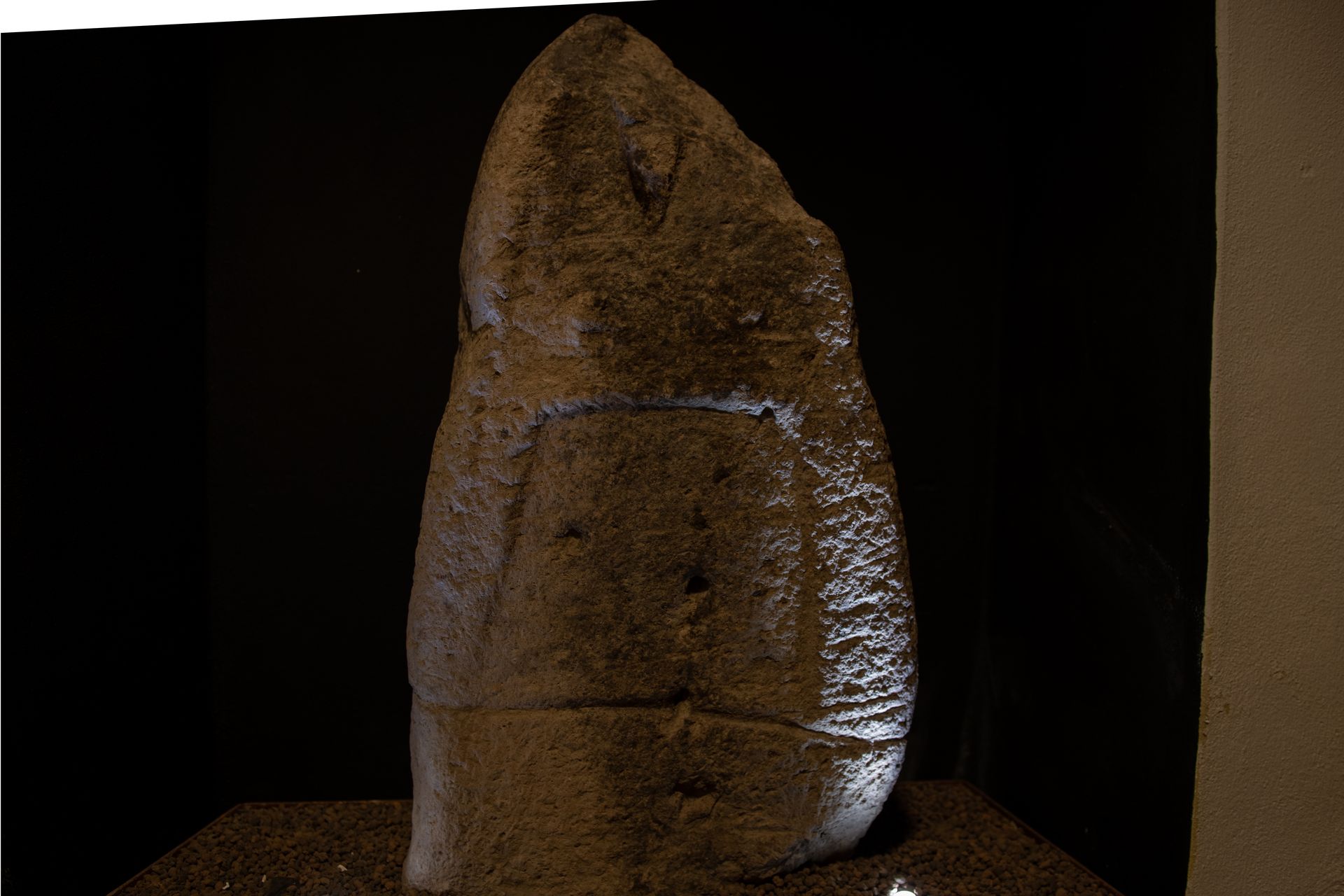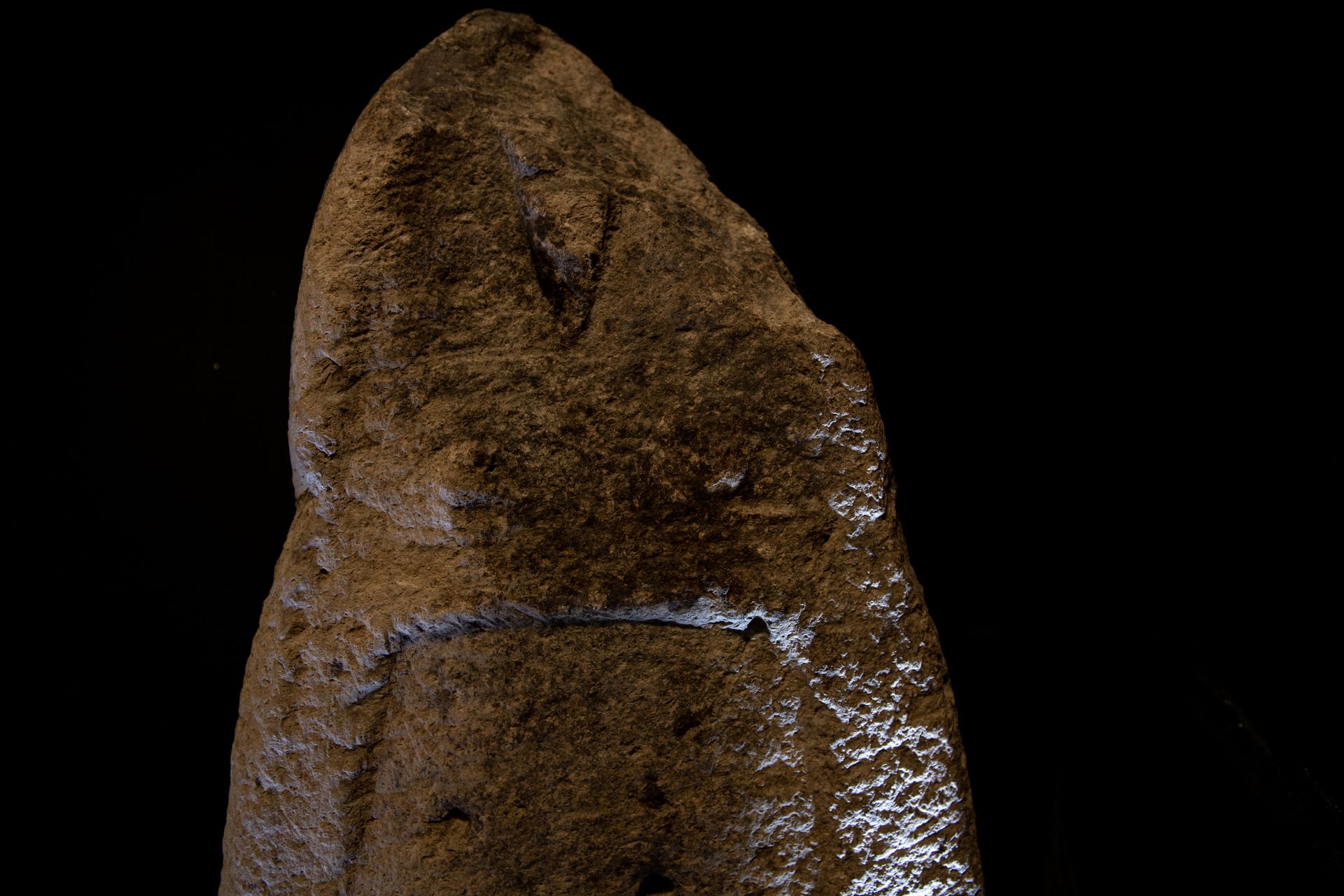Two disk- or pill-shaped breasts are usually what unequivocally distinguish the femininity of a menhir, in some cases emphasized by hairstyle, as can be seen in the statue of Genna Palàu I of Laconi.
The female statues are smaller than the males, which are clearly preponderant in terms of quantity and proportion. In one instance, Piscina 'e Sali III of Laconi, the frame of a door is depicted in bas-relief below the breasts, the door of life through which one enters the world or accesses the afterlife. This latter feature is an attribute of the Mother Goddess, the mediterranean Great Mother, the only divinity who can give life and who, in her womb, tends the mortal remains of men to which she will give new life, as is testified in numerous Domus de Janas.
It is important to emphasize that during the First Metal Age, 2,700-2,400 B.C., societies changed considerably, facilitating the advent of warrior clans commanded by leaders already venerated in their lifetimes, heroes who would then be immortalized by the male statue-menhirs. It is likewise important to emphasize the relationship between this entirely new male divinity and that of the female divinity, the Great Mother, who, beginning in the Neolithic era, will continue to maintain a primary role in the Sardinian religion, even if no longer preeminent.
 Menhir museum, hall (Ph. Irene Ollargiu)
Menhir museum, hall (Ph. Irene Ollargiu) Menhir museum, Genna Arrele III menhir, detail of cupels (Ph. Irene Ollargiu)
Menhir museum, Genna Arrele III menhir, detail of cupels (Ph. Irene Ollargiu) Menhir museum, Piscina 'e Sali IV menhir (Ph. Irene Ollargiu)
Menhir museum, Piscina 'e Sali IV menhir (Ph. Irene Ollargiu) Menhir museum, Piscina 'e Sali IV menhir (Ph. Irene Ollargiu)
Menhir museum, Piscina 'e Sali IV menhir (Ph. Irene Ollargiu)